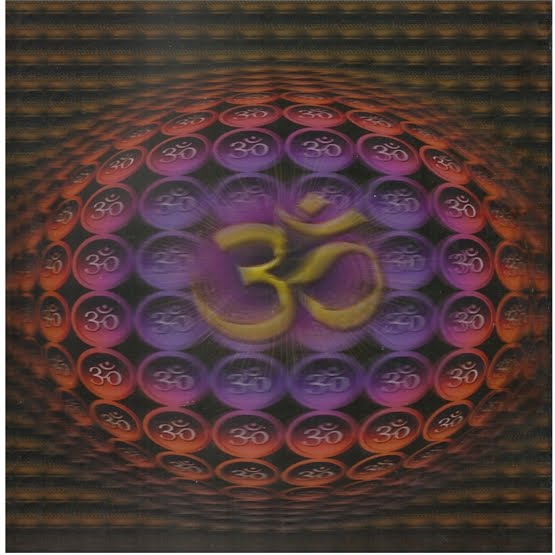The Ayurvedic Dosha Questionnaire from "Simply Ayurveda" by Bharti Vyas
The first step towards benefiting from Ayurveda is to determine your body type or dosha, so you can apply specific information on diet, lifestyle, meditation and more.
Everyone is different , but Ayurveda believes there are three broad brush-strokes. Each individual is controlled by these three elements to varying degrees, but we usually have one or possibly two dominant doshas. Which mixture of types you are (known as 'prakruti') is determined by your behavioural traits as well as body size and composition, food preferences, energy levels and metabolism. Discovering your type is the most significant step in finding out more about how Ayurveda can be helpful to you.
Please Remember:
It is best to consult an ayurvedic doctor to determine your dosha before starting any ayurvedic treatment or to recommend your dosha-specific do's and dont's for you.PHYSICAL ASSESSMENT:A I am slim and fine-boned with only soft muscular definition
B I am of medium physique with fairly good muscular development
C I am of large build , prone to roundness and gain weight easily
A I can eat what I want without having to worry about putting on weight
B I gain weight if I eat too much, but can lose it if I try
C If I put on weight, which I do fairly easily, it's a real struggle to shed it
A My skin is cool, rough, and prone to being quite dry in places
B My skin is warm and prone to oiliness
C My skin is smooth, cool to the touch and hardly ever dry
A My underlying skin tone is best described as bluish
B My underlying skin tone is best described as reddish
C My underlying skin tone is best described as yellowish
A My skin is prone to dehydration and dryness, especially when it is cold outside
B I suffer from rashes and inflammation and sometimes burn
C I sometimes suffer from whiteheads and blackheads
A My complexion is marked by fine lines and prominent veins
B I have some broken capillaries, freckles and moles
C My skin is supple and soft
A My hair has a natural curl and can be quite dry on the ends
B My hair is fairly straight and fine
C My hair is wavy, thick and lustrous
A My eyes are small and pale, dark brown, grey or slate blue
B My eyes are bright blue, light brown, lustrous and bright
C My eyes are large,
watery and brown
A My lips are dry and quite slender
B I have fairly average soft red lips
C My lips are firm, large and quite plump
A My fingernails are quite dry, brittle and can be rough
B I have soft pink fingernails that don't split often
C My fingernails are thick , smooth and very strong
PHYSICAL TENDENCIES:A I prefer warm weather to cold
B I prefer cool weather and particularly enjoy cold foods like ice-cream and ice cold drinks
C I enjoy most climates but prefer warmer weather
A My energy is inconsistent and usually comes in bursts
B My energy levels are moderate
C My energy tends to be fairly steady when apparent but I'm often lazy
A I am active but I lose strength quickly
B I enjoy physical activity and sweat easily
C I have good endurance but I'm naturally lethargic
A I am active and restless, and what I lack in strength I make up for in enthusiasm
B I have average stamina and good staying power
C I have very good stamina and physical endurance
A I do not usually require much sleep and I sleep lightly
B I need a moderate amount of sleep and sleep soundly
C I enjoy sleep and sleep deeply
A I am talkative and tend to talk quite fast
B I have a fairly confident voice and can be an assertive speaker
C I have a gentle voice and talk fairly slow
A My appetite is irregular, I eat what I want when I want it
B I have a good appetite and tend to eat regularly
C I eat fairly slow, enjoy food and have a consistently good appetite
A I alternate between dry and loose stools
B I have soft stools tat tend to be loose
C Food moves through me slowly
A I sometimes experience low appetite, low back pain and muscle spasms
B I can suffer with hot flushes, acid stomach and heartburn
C I have trouble with sinus congestion, coughs, colds, and weight gain
TEMPERAMENT ASSESSMENT:A I learn new things easily, but I tend to forget easily as well
B My memory is good
C Although I tend to learn slowly, I go on to have a good recall
A I tend to be enthusiastic and vivacious with an active imagination
B I tend to be somewhat orderly and precise and can be easily irritated
C I am steady, calm and infrequently ruffled
A When I am stressed I suffer anxiety attacks, insomnia, and sometimes hysteria
B Under stress I can become jealous, hostile, frustrated and easy to anger
C I f I am under too much pressure I become depressed, despondent and possessive
A I am upset by buffeting winds and cold
B Heat and sun make me edgy
C When it is cold and damp I feel miserable
A My moods fluctuate, often fairly unpredictable
B I am goal and task driven, my moods are a secondary consideration
C I am consistently compassionate and caring
A I am creative and imaginative, I like to express myself
B I am a perfectionist who likes to be organized and efficient
C My thoughts and ideas are well organized and tend to be fairly tranquil
A My thoughts are often dreams which I do not need to see through to their conclusion
B My ideas and thoughts tend to be well-considered and logical
C I am thorough and good at following through
A I choose an unpredictable, exciting lifestyle and hate routine
B I like my life to be busy but wouldn't say I hate routine
C I enjoy a relaxed and fairly slow-paced routine lifestyle
RESULTS: MOSTLY As: AIR (VATA) TYPEYou are a natural whirlwind, always on the go and as energetic and unpredictable as your name suggests. You are artistic and tender, but can be over-sensitive and prone to burnout when you don't take enough time to care for yourself or try to cram too much into every week.
You can be visionary and at your best you are highly creative and imaginative - at whatever you choose to put your mind to, but when you overload yourself you experience digestive problems, you get scatty, prone to sensitive dry skin, sleep-less nights and you become less effective.
You need to avoid the crash- and -burn option by making time to chill out and, however loathsome it may sound, trying to coax a few more elements of routine into your life. Try Tai Chi, walking, dancing, yoga, or, when you feel yourself getting overwrought, make a few days space to relax and unwind.
MOSTLY Bs: FIRE (PITTA) TYPEYou are one of life's alchemists, blazing a trail, making a difference, taking no prisoners. You are as fiery and passionate as your type name suggests, dynamic , active and inspirational. There is never a dull minute around you. When your life is in balance you have the attractive commanding presence of the natural leader, you radiate perception and focus, and love taking control and encouraging other people to have a good time. But if you overdo it, don't fuel your body with the right foods and give in to your more fiery excesses, you can become brittle , critical, overly, competitive, and your skin can flare up as a visual indication of your internal combustion. You need to cool down, controlling the excesses of your inflamed inner core- think fun exercise like skiing, swimming and cycling to give the physical expression you require without bombarding yourself within an environment of competitiveness.
Take a breath before you respond, learn the art of compromise, and make enough time to relax.
MOSTLY Cs: EARTH (KAPHA) TYPEAt our best you are as deliciously grounded and dependable as your type suggests. You are solid, patient and intensely loyal. You are drawn towards people, who are in turn drawn to confide in you, and are a wonderful source of constancy and solidity in a crisis.
But when out of balance that laid -back charm can turn into excess sluggishness and your skin can become excessively oily. If you don't ensure that enough is going on you tend to vegetate, seeking solace in the third bar of chocolate and feeling a bit stagnant internally. If you feel this happening you need to act fast, and top up your self-esteem and energy levels with a plenty of fresh fruits and vegetables.
You have fantastic endurance and would really benefit from all sports that get your metabolism moving.
MIXED TYPESIf you scored fairly evenly across two types, you are most likely a combination type.
Most people are a double type (two doshas present in high proportions) but one type will tend to be dominant. This one is always named first and is considered to be the leading dosha. So if you scored highly in Air and Fire, but marginally more points for Fire, you are a Fire-Air type and your dominant type is Fire. You can benefit from reading recommendations for your type.
A much smaller percentage of people are what is called a tridosha type, meaning they scored almost equally across all three types. This is an unusual blessing and means you are said to face a long and happy life with few health problems.



